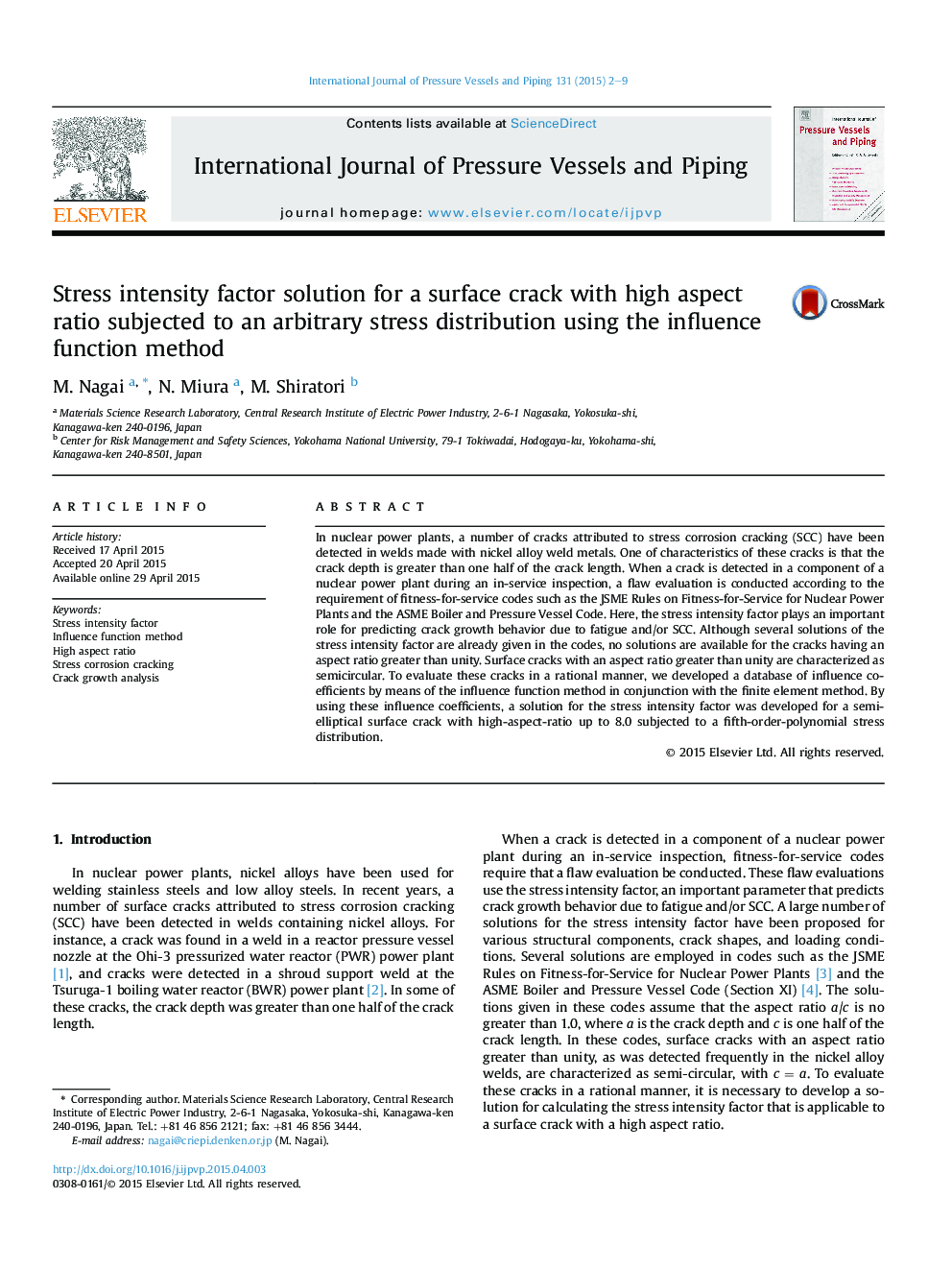| کد مقاله | کد نشریه | سال انتشار | مقاله انگلیسی | نسخه تمام متن |
|---|---|---|---|---|
| 787260 | 1466068 | 2015 | 8 صفحه PDF | دانلود رایگان |

In nuclear power plants, a number of cracks attributed to stress corrosion cracking (SCC) have been detected in welds made with nickel alloy weld metals. One of characteristics of these cracks is that the crack depth is greater than one half of the crack length. When a crack is detected in a component of a nuclear power plant during an in-service inspection, a flaw evaluation is conducted according to the requirement of fitness-for-service codes such as the JSME Rules on Fitness-for-Service for Nuclear Power Plants and the ASME Boiler and Pressure Vessel Code. Here, the stress intensity factor plays an important role for predicting crack growth behavior due to fatigue and/or SCC. Although several solutions of the stress intensity factor are already given in the codes, no solutions are available for the cracks having an aspect ratio greater than unity. Surface cracks with an aspect ratio greater than unity are characterized as semicircular. To evaluate these cracks in a rational manner, we developed a database of influence coefficients by means of the influence function method in conjunction with the finite element method. By using these influence coefficients, a solution for the stress intensity factor was developed for a semi-elliptical surface crack with high-aspect-ratio up to 8.0 subjected to a fifth-order-polynomial stress distribution.
Journal: International Journal of Pressure Vessels and Piping - Volume 131, July 2015, Pages 2–9